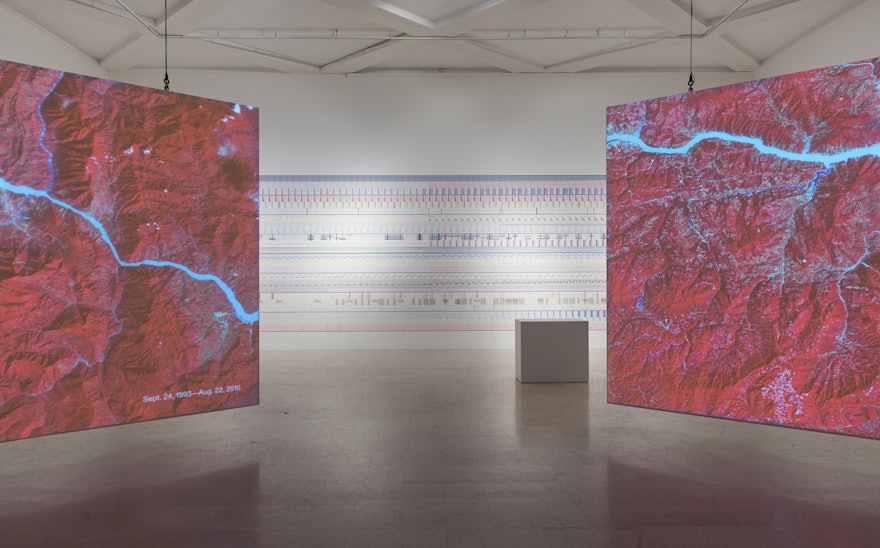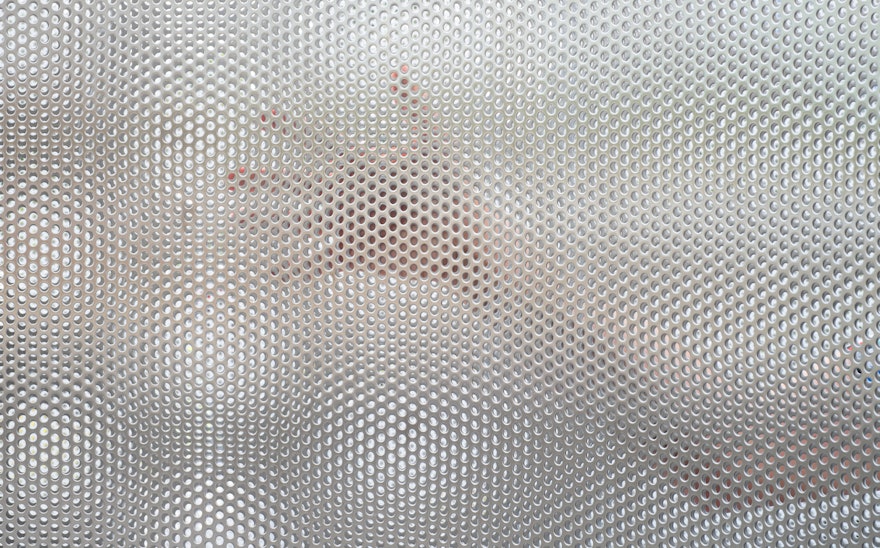Just as a photograph captures a moment in time, data represents real life and offers a snapshot of the world. Before joining Pentagram, partner Giorgia Lupi and her team at Accurat were commissioned to create The Room of Change, an original piece for the XXII International Exhibition of La Triennale di Milano in 2019 that documents global changes over thousands of years and looks ahead to the future in a series of colorful data tapestries.
Positioned in the opening gallery of the exhibition, the immersive installation introduces the Triennial theme, Broken Nature: Design Takes on Human Survival, highlighting the concept of restorative design and exploring the threads that connect humans to their natural environments. Curated by Paola Antonelli, the Triennial features more than 100 works by designers, architects and artists representing 40 countries.
Wrapping around the walls, the 100-foot-long data murals illustrate how multiple aspects of our environment have evolved and will likely continue to change, pulling together many streams of information—world population, disease rates, energy consumption and average temperatures—that address many of the topics presented in the exhibition. From left to right, time flows on the wall through abstract visual patterns, covering our past, present and future.
The data represented begin in 1000 B.C. and run into a speculative future ending in 2400, echoing some of the exhibition’s overall aims. Each horizontal band depicts the evolution over time of one single story of change, told through a combination of data sets on the topic, while each vertical section of the wall is a picture of a precise moment in time.
Along with the tapestries, the room hosts two large screens showing a selection of NASA’s “Images of Change,” before-and-after satellite pictures representing the effects of melting glaciers, urban sprawl and other developments over the past two decades. The designers wanted the data murals to complement the bigger scale of the NASA projections with a story about change that could be relatable. The guiding principle was the idea that most of the change we experience is only shown to us from far away and high above, when in reality it is made up of incremental moments.
The Room of Change combines several different data sources, depicting the world from both global and local-individual perspectives. The murals layer dense and granular information within the narration to highlight how change is pervasive at all scales. Information is organized around eight macro topics or themes—nature, the universe, the animal kingdom, society, hope, happiness, science and technology. These are all related to humankind, but also reveal consequences that oftentimes affect us and other species simultaneously.
Each topic is represented with a different visual pattern comprised of colored stripes and symbols, and at first glance, a visitor might not even realize that data is the organizing principle of the motif. The wallpaper creates an intricate morphing pattern that reveals the importance of a perpetual interplay of scales and dimensions when assessing change, and illustrates the evolution of many recurring themes of the exhibition.
The changes are illustrated through a number of global data sets (world population, average temperatures, disease rates, energy consumption, etc.) to frame large-scale phenomena with broad strokes as well as single and specific stories that will directly or indirectly represent the micro consequences (such as the disappearing Aral Sea, the dip in life expectancy in Cambodia during the civil war, the quick shift in South Korean exports from agricultural products and commodities to high tech, and more).
A legend accompanying the installation explains the global framework and how to read the individual stories. Placed on a pedestal at the center of the room, the guide invites visitors to discover the changes from a panoramic perspective, where they may be navigated in the same way one would look at a mountain range with the help of a map.

